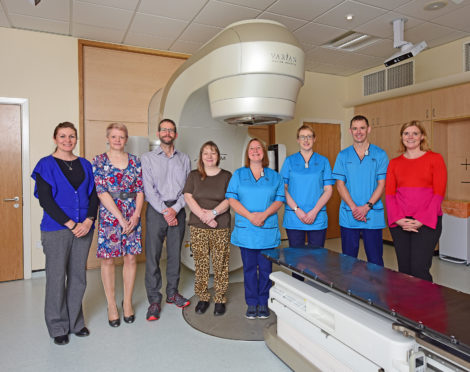A form of radiotherapy which does not require tattoos for breast cancer patients is being pioneered by NHS Highland.
In a first for Scotland, it will be the first NHS centre to take forward the treatment.
Normally before radiotherapy treatment can begin, breast patients have a CT scan which allows treatment to be planned. They are then tattooed with small dots to allow accurate positioning for that treatment to begin.
Some patients feel a tattoo can be quite negative, leaving them with a constant reminder of their treatment. A relatively new optical monitoring system (AlignRT) can now provide a different method of positioning the patient, which does not rely on tattoos.
Mo Beange, radiotherapy manager and head of therapeutic radiography for NHS Highland, said: “We have wanted to do this for a while and now that we have our two AlignRT systems, which track a patient’s position before and during radiation therapy, we are now able to offer tattooless radiotherapy to suitable patients.
“Patients will be scanned as usual but we will use a surface guided radiotherapy system to ensure patients are positioned accurately.”
Surface Guided Radiation Therapy avoids the need for skin marks, delivering at least equivalent accuracy in patient positioning. Feedback from the centres that already use this show that patients much prefer this method.
